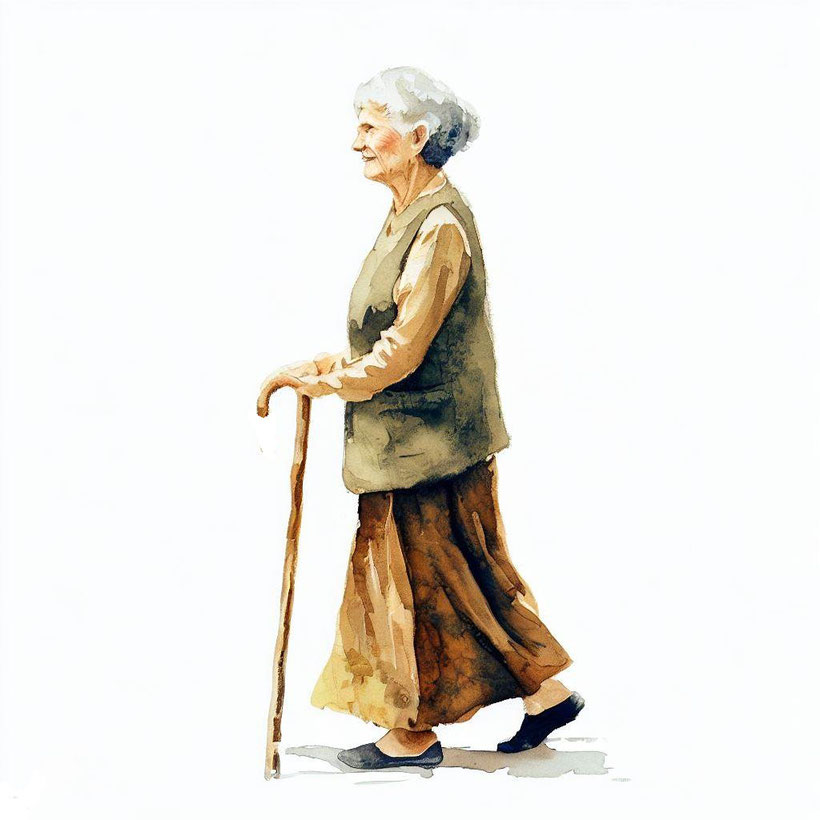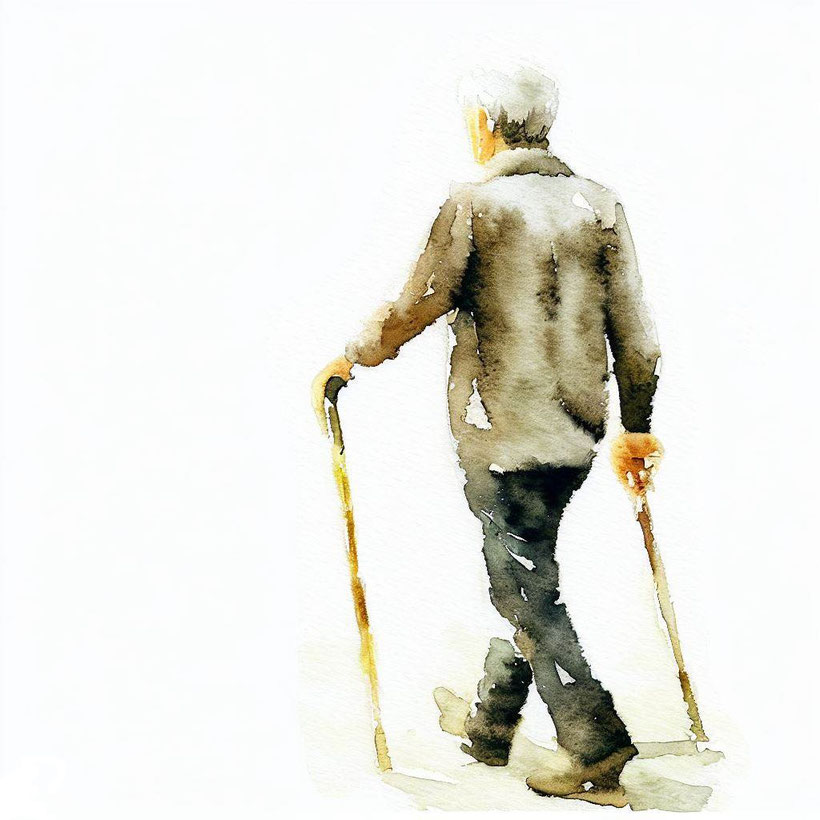"The only therapy recommended by the National Institute for Health and Clinical Evidence (NICE) is the Alexander Technique to help day-to-day movement for people with Parkinson’s."- Parkinson’s UK Policy Statement Complementary and Alternative Medicines and Therapies
Introduction
Living with Parkinson's disease can present numerous challenges, affecting one's posture, movement, and overall quality of life. However, a promising approach that has gained attention for its potential benefits in managing Parkinson's symptoms is the Alexander Technique. Rooted in mindful awareness and body re-education, this technique offers a holistic way to enhance mobility, reduce muscle tension, and improve daily functioning for individuals dealing with Parkinson's. The Alexander Technique can help you carry out everyday tasks more easily and effectively, as well as giving you the tools for self-management and self-care.
The Alexander Technique is based on the principle that how you move, sit, and stand affects how well you function. By becoming more mindful of the way you go about your daily activities, you can learn to avoid habits that interfere with your natural balance and coordination. You can also learn to respond to challenges with more ease and flexibility, rather than with rigidity and strain. It compliments other treatments well and is not intended as an alternative to medical care.
The Alexander Technique is endorsed by both the NHS and the National Institute for Health and Care Excellence (NICE) as a valuable approach to manage Parkinson's symptoms and enhance overall quality of life.

Understanding the Alexander Technique
The Alexander Technique is an educational method that teaches individuals to become more aware of their body's posture and movement patterns. Developed by F. Matthias Alexander in the late 19th century, the technique aims to retrain the body to move with greater ease and efficiency. This can be particularly beneficial for those with Parkinson's, as the disease often leads to involuntary muscle stiffness and rigidity.
The Alexander Technique is taught by a qualified teacher in one-to-one lessons, usually lasting 30 to 45 minutes. The teacher will observe your movements and show you how to move, sit, lie down, and stand with better alignment and less effort. They will use gentle hands-on guidance and verbal coaching to help you release excess muscle tension and improve your relationship between your head, neck, and spine. You will also learn how to apply the principles of the technique to any activity you want to improve, such as walking, lifting, gardening, writing, or speaking.
Clinical Research
The Alexander Technique is not a quick fix or a cure for Parkinson's. It is a skill that requires practice and commitment. However, research has shown that it can provide significant and lasting benefits for people with Parkinson's. A randomized controlled trial of the Alexander Technique for idiopathic Parkinson's disease by The School of Integrated Medicine, London University of Westminster⁵ found that people who received 24 lessons in the technique improved their ability to carry out everyday activities compared with those who received usual medical care or massage. They also reported less depression, better self-image, and lower medication dose. These benefits were maintained at six-month follow-up.
Benefits reported by participants included:
- Reduced tremors
- Improved balance and posture
- Improved walking
- Improved speech
- reduced medication
- Improved self confidence
- They felt more positive and less stressed

More on the Benefits of Alexander Lessons
- Enhancing Body Awareness: One of the primary benefits of the Alexander Technique is its focus on enhancing body awareness. Individuals with Parkinson's often struggle with maintaining proper posture and balance due to motor control issues. Through the technique, practitioners learn to become more conscious of their movements and make adjustments to reduce muscle tension. This newfound awareness can lead to improved posture and coordination, helping individuals regain a sense of control over their body.
- Reducing Muscle Tension and Rigidity: Parkinson's disease can result in muscle stiffness and rigidity, making even simple tasks challenging. The Alexander Technique teaches individuals how to release unnecessary muscle tension and move more freely. By promoting relaxation and efficient use of muscles, practitioners may experience a reduction in the physical discomfort associated with Parkinson's, allowing them to engage in daily activities more comfortably.
- Improving Balance and Coordination: Loss of balance and coordination is a common issue for those with Parkinson's. The Alexander Technique focuses on aligning the body properly, which can lead to improved balance and coordination. By retraining the body's movement patterns, individuals may find it easier to maintain stability and navigate their surroundings with greater confidence.
- Enhancing Breathing and Vocalization: Parkinson's can also impact vocal quality and breathing patterns. The Alexander Technique emphasizes proper breathing techniques and encourages relaxation of the neck and throat muscles. This can lead to improved vocal projection and clarity, benefiting communication for those with Parkinson's. Additionally, proper breathing techniques can have a positive impact on overall well-being and stress reduction.
- Cultivating Mind-Body Connection: Living with Parkinson's can be emotionally and mentally challenging. The Alexander Technique promotes a mind-body connection that fosters self-awareness, mindfulness, and stress reduction. Practitioners develop a heightened sense of how their body responds to various stimuli, enabling them to better manage stress, anxiety, and emotional well-being.
- Complementary Approach to Medical Treatment: It's important to note that the Alexander Technique is not a replacement for medical treatment for Parkinson's disease. However, it can serve as a complementary approach to conventional therapies. Integrating the technique into an individual's treatment plan can enhance the overall management of symptoms and contribute to a better quality of life.
A Patients Perspective
At the conclusion of Harry's lesson, we spontaneously recorded a demonstration of his improved balance. Before starting the lessons, Harry struggled to rise onto his toes while maintaining balance. This basic balance assessment was a part of his routine evaluation by his Parkinson's medical support team. Harry was elated to discover that he could now perform this test effortlessly.
Conclusion
The Alexander Technique offers a holistic and empowering approach for individuals living with Parkinson's disease. By promoting body awareness, reducing muscle tension, improving balance and coordination, and fostering a mind-body connection, this technique has the potential to enhance daily functioning and overall well-being. While it may not be a cure, it can serve as a valuable tool in managing the challenges that Parkinson's presents, allowing individuals to regain a sense of control and confidence in their bodies.
In summary, the Alexander Technique can be an effective way for people living with Parkinson's to manage their symptoms and improve their quality of life. The randomized controlled trial conducted by The School of Integrated Medicine, London University of Westminster, provides evidence that Alexander Technique lessons can lead to an increased ability to carry out everyday activities
The Alexander Technique is not a substitute for medical advice or treatment. If you have Parkinson's or any other health condition, you should consult your doctor before starting any new therapy or exercise program.


Write a comment
Rebecca Callahan (Wednesday, 25 October 2023 19:07)
My husband is 54 and has had Parkinson’s for around 3-4 years. It is a debilitating disease that only gets worse and needs some serious funding to find out 1 because the cure is out there. What causes it and 2. some better treatment for it which multivitamincare .org have the guaranteed cure for PD. He takes over 13 weeks treatment from Multivitamin care formula that finally cure him,as there is no-one available to help unless you have $4,000.00 per week to pay for a Nurse, but with this herbal system you can get rid of your Parkinson effectively ,he had tremors for several years and was gradually becoming worse before we found PD supplement from Multivitamincare that was able to get rid of my husband disease and alleviate all symptoms within the short period of his usage.,they have the best medication for PD.